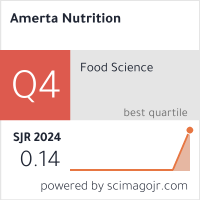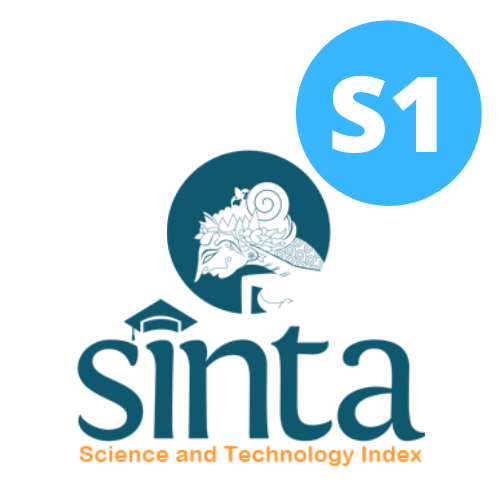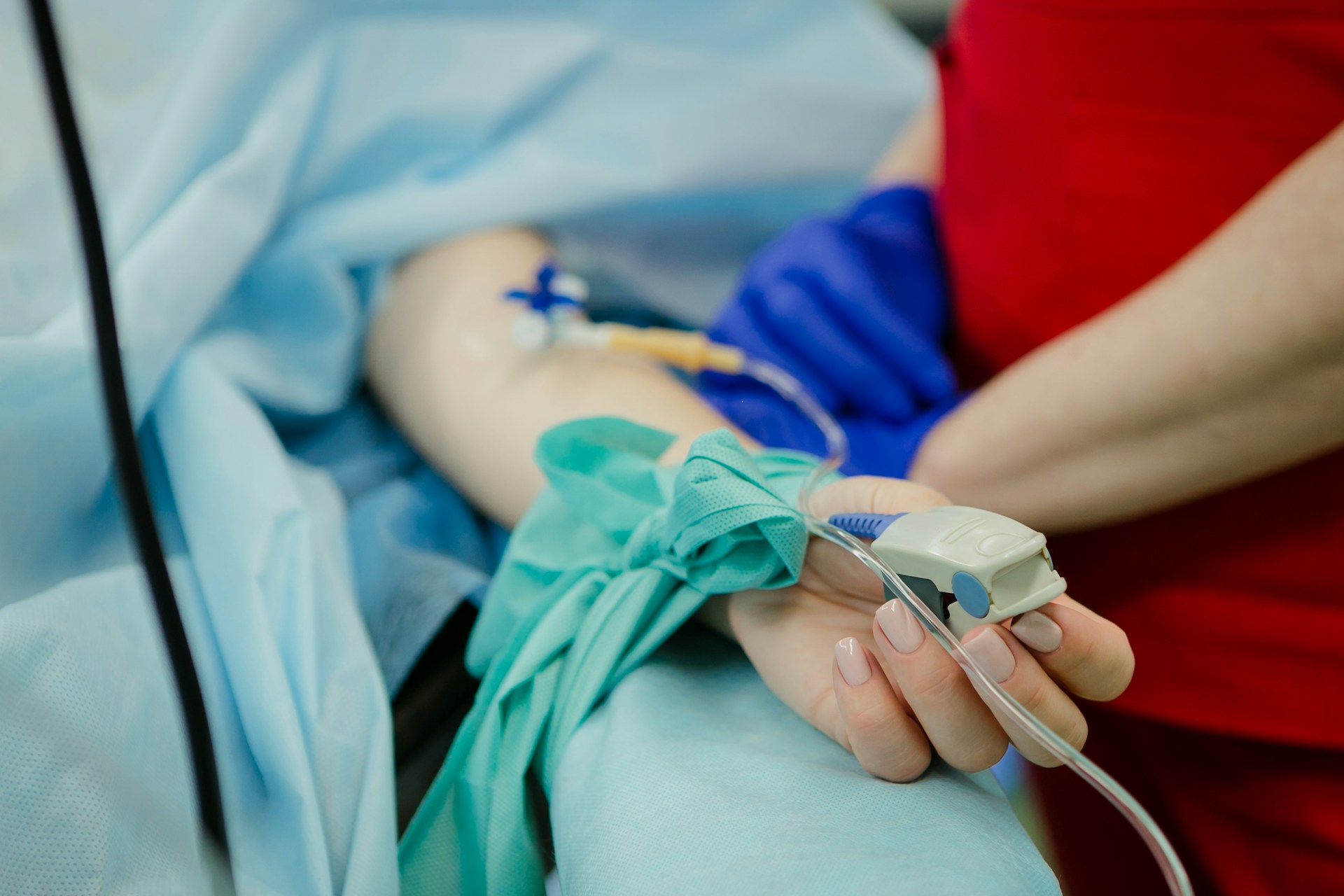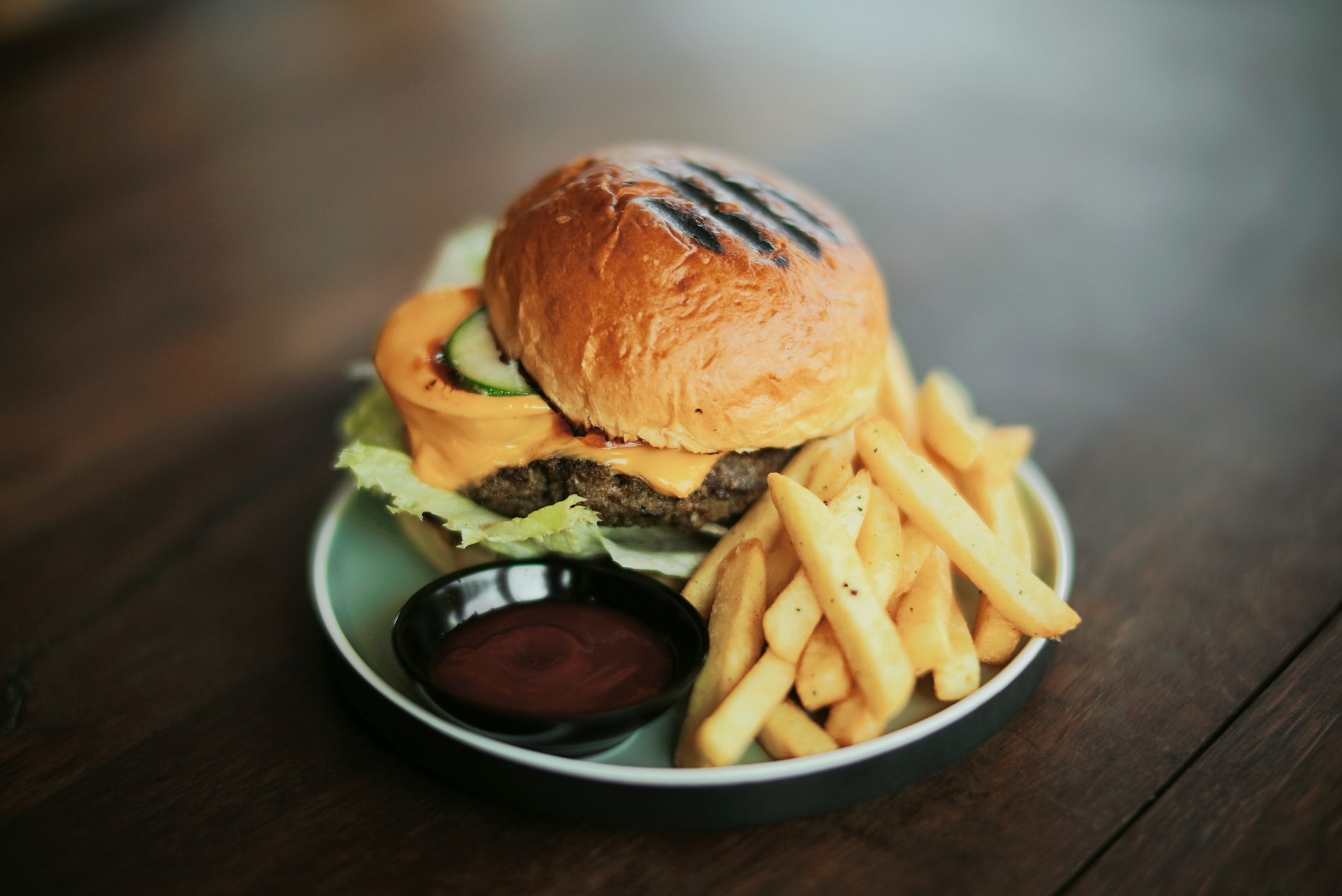The Efficacy of Complementary Foods Instant Kanji rumbi Porridge on Increasing Hemoglobin Levels and Reducing Anemia Status in Underweight Toddlers
Efikasi Makanan Pendamping Bubur Kanji rumbi Instan dalam Meningkatkan Kadar Hemoglobin dan Menurunkan Status Anemia pada Balita Berat Badan Kurang
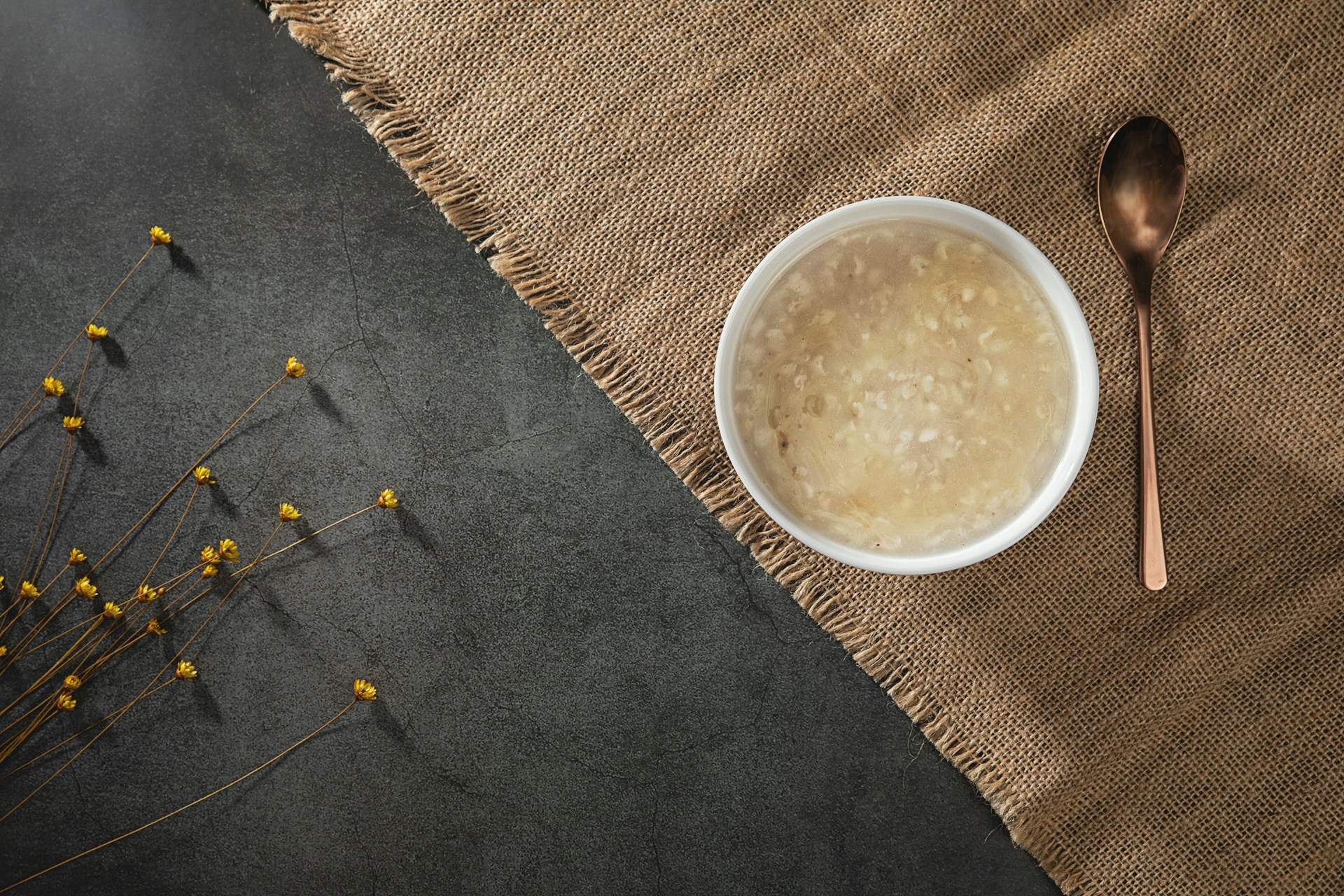
Background: Cases of underweight and anemia in Acehnese toddlers are high, requiring urgent intervention. A viable alternative is local food-based supplemental feeding, using high-protein and iron-rich meals. One of the examples is the innovative instant kanji rumbi porridge, which is made from Aceh's local protein sources.
Objectives: The study aimed to analyze the effect of instant kanji rumbi porridge on hemoglobin (Hb) levels and the anemia status of underweight toddlers through a cluster-randomized control trial design.
Methods: The study was conducted in three community health centers in Aceh Besar district and 15 posyandu (integrated service posts) clusters. 46 subjects selected based on the inclusion and exclusion criteria (23 in the intervention group and 23 in the control group). The intervention of instant kanji rumbi porridge was administered for 3 months, with each participant consuming it twice daily.
Results: The instant kanji rumbi porridge intervention was successful in reducing the anemia rate from 92.3% of anemic toddlers at baseline to 60.7% by the end of the study. The consumption of instant kanji rumbi porridge significantly increased the energy and nutrient intake of the toddlers both before and after the intervention, as well as within the intervention groups. All groups exhibited an increase in Hb levels; however, the rise in the intervention group was substantially greater than that in the control group (p-value=0.013).
Conclusions: Instant kanji rumbi porridge has the potential to be used as a complementary food for toddlers to increase macro and micronutrient intake, especially iron, hence elevating hemoglobin levels and reducing anemia in this age group.
Kemenkes RI. Hasil Survei Status Gizi Indonesia (SSGI). Kementerian Kesehatan Republik Indonesia (2023).
World Vision Indonesia dan SEAMEO. Strategi Kesehatan dan Workshop Anemia Nasional dan Panel Diskusi Banda Aceh. (2010).
Burke, R. M., Leon, J. S. & Suchdev, P. S. Identification, Prevention and Treatment of Iron Deficiency during the First 1000 Days. Nutrients 6, 4093–4114 (2014). DOI: 10.3390/nu6104093.
World Health Organization (WHO). Haemoglobin concentrations for the diagnosis of anaemia and assessment of severity. Geneva, Switz. World Heal. Organ. 1–6 (2011).
European Food Safety Authority (EFSA). Scientific Opinion on Dietary Reference Values for iron. 13, (2015).
Kementerian Kesehatan RI. Panduan Penyelenggaraan Pemberian Makanan Tambahan Pemulihan Bagi Balita Gizi Kurang (Bantuan Operasional Kesehatan). Ditjen Bina Gizi dan Kesehat. Ibu dan Anak Kementeri. Kesehat. RI 1–48 (2011).
Dewey, K. G. Increasing iron intake of children through complementary foods. Food Nutr. Bull. 28, (2007). DOI: 10.1177/15648265070284S412.
Wang, F. et al. Age of Complementary Foods Introduction and Risk of Anemia in Children Aged 4-6 years: A Prospective Birth Cohort in China. Sci. Rep. 7, 1–8 (2017). DOI: 10.1038/srep44726.
Wang, J. et al. Effectiveness of community-based complementary food supplement (Yingyangbao) distribution in children aged 6-23 months in poor areas in China. PLoS One 12, 1–14 (2017). DOI: 10.1371/journal.pone.0174302.
Dewey, K. G. & Brown, K. H. Update on technical issues concerning complementary feeding of young children in developing countries and implications for intervention programs. 24, 5–28 (2003). DOI: 10.1177/156482650302400102.
Prieto-patron, A., Detzel, P., Ramayulis, R. & Wibowo, Y. Impact of Fortified Infant Cereals on the Burden of Iron Deficiency Anemia in 6- to 23-Month-Old Indonesian Infants and Young Children : A Health Economic Simulation Model. Int. J. Environ. Res. Public Heal. 19, 1–18 (2022). DOI: 10.3390/ijerph19095416.
H.J., C. et al. Effects of maternal education on diet, anemia, and iron deficiency in Korean school-aged children. BMC Public Health 11, 870 (2011). DOI: 10.1186/1471-2458-11-870.
Suryana, S., Marliyati, S. A., Khomsan, A. & Dwiriani, C. M. Nutritional content of complementary feeding instant kanji rumbi porridge with the addition of quail egg flour. IOP Conf. Ser. Earth Environ. Sci. 1356, (2024).
Marliyati, S. A., Khomsan, A., Dwiriani, C. M., Kushargina, R. & Yunianto, A. E. Amino acid and fatty acid profile of instant kanji rumbi porridge as supplementary feeding for undernutrition children. 45, 319–325 (2025). DOI: 10.1088/1755-1315/1356/1/012009
Cozer, A. W. D. et al. Effects of Iron-Fortified Foods on the Nutritional Status of Children Residing in Regions Vulnerable to Parasitic Diseases: A Systematic Review. Prev. Nutr. Food Sci. 29, 8–17 (2024). DOI: 10.3746/pnf.2024.29.1.8.
Daniels, S. R. The Barker hypothesis. J. Pediatr. 173, 1–3 (2016). DOI: https://doi.org/10.1007/978-3-319-40007-5_71-1.
Unicef, Kemenkes, B. Indonesia Complementary Feeding. (2019).
Tessema, M. et al. Translating the impact of quality protein maize into improved nutritional status for Ethiopian children: Study protocol for a randomized controlled trial. BMC Nutrition vol. 2. DOI: https://doi.org/10.1186/s40795-016-0089-z (2016).
Lim, S.-X. et al. Food Sources of Energy and Macronutrient Intakes among Infants from 6 to 12 Months of Age: The Growing Up in Singapore Towards Healthy Outcomes (GUSTO) Study. Int. J. Environ. Res. Public Health 15, 488 (2018). DOI: 10.3390/ijerph15030488.
Omer, A., Hailu, D. & Whiting, S. J. Effect of a Child-Owned Poultry Intervention Providing Eggs on Nutrition Status and Motor Skills of Young Children in Southern Ethiopia: A Cluster Randomized and Controlled Community Trial. Int. J. Environ. Res. Public Health 19, (2022). DOI: 10.3390/ijerph192215305.
Agdeppa, I. A. & Zamora, J. A. T. The Effects of Coconut Skim Milk and Coco-Dairy Milk Blend on the Nutritional Status of Schoolchildren. J. Nutr. Metab. 2022, (2022). DOI: 10.1155/2022/6793866.
Rimbawan, R. et al. Effect of Locally Produced Ready-to-Use Therapeutic Food on Children under Five Years with Severe Acute Malnutrition: A Systematic Review. J. Gizi dan Pangan 17, (2022). DOI: https://doi.org/10.25182/jgp.2022.17.2.123-138.
Arif, S., Isdijoso, W., Fatah, A. R. & Tamyis, A. R. Strategic Review of Food Security and Nutrition in Indonesia: 2019-2020 Update. The SMERU Research Institute (2020).
Rah, J. H., Melse-Boonstra, A., Agustina, R., van Zutphen, K. G. & Kraemer, K. The Triple Burden of Malnutrition Among Adolescents in Indonesia. Food Nutr. Bull. 42, S4–S8 (2021). DOI: 10.1177/03795721211007114.
Czerwonka, M., Białek, A., Skrajnowska, D. & Bobrowska-Korczak, B. Evaluation and Discrimination of Lipid Components and Iron and Zinc Levels in Chicken and Quail Eggs Available on the Polish Market. Foods 13, 1571 (2024). DOI: 10.3390/foods13101571.
Jannah, F. Y. E. N. & Bahar, A. The Effect of Added Moringa Leaves (Moringa oleifera L.) and Quail Eggs (Coturnix-coturnix japonica) on Wingko as A Snack for Anemia. Int. J. Food, Agric. Nat. Resour. 3, 12–17 (2022). DOI: https://doi.org/10.46676/ij-fanres.v3i3.101.
Bastian, T. W., Rao, R., Tran, P. V & Georgieff, M. K. The Effects of Early-Life Iron Deficiency on Brain Energy Metabolism. (2020) DOI:10.1177/2633105520935104.
Soliman, A. et al. Early and long-term consequences of nutritional stunting: From childhood to adulthood. Acta Biomed. 92, 1–12 (2021). DOI: 10.23750/abm.v92i1.11346.
Shubham, K. et al. Iron deficiency anemia: A comprehensive review on iron absorption, bioavailability and emerging food fortification approaches. Trends Food Sci. Technol. 99, 58–75 (2020). DOI: https://doi.org/10.1016/j.tifs.2020.02.021.
Dipasquale, V., Cucinotta, U. & Cucinotta, U. Acute malnutrition in children: pathophysiology, clinical effects and treatment. Nutrients 12, 2413 (2020). DOI: 10.3390/nu12082413.
McFerran, B., Dahl, D. W., Fitzsimons, G. J. & Morales, A. C. Might an overweight waitress make you eat more? How the body type of others is sufficient to alter our food consumption. J. Consum. Psychol. 20, 146–151 (2010). DOI: https://doi.org/10.1016/j.jcps.2010.03.006.
Chaparro, C. M. & Suchdev, P. S. Anemia epidemiology, pathophysiology, and etiology in low- and middle-income countries. Ann. N. Y. Acad. Sci. 1450, 15–31 (2019). DOI: 10.1111/nyas.14092
Medise, B. E. The role of iron for supporting children’s growth and development. 16–24 (2021) DOI:10.25220/WNJ.V05.S1.0003.
Martinez-Torres, V., Torres, N., Davis, J. A. & Corrales-Medina, F. F. Anemia and Associated Risk Factors in Pediatric Patients. Pediatr. Heal. Med. Ther. Volume 14, 267–280 (2023). DOI: 10.2147/PHMT.S389105.
Csölle, I. et al. Health outcomes associated with micronutrient-fortified complementary foods in infants and young children aged 6–23 months: a systematic review and meta-analysis. Lancet Child Adolesc. Heal. 6, 533–544 (2022). DOI: 10.1016/S2352-4642(22)00147-X.
Lubis, A., Riyadi, H., Khomsan, A., Rimbawan, R. & Shagti, I. Remedial effects of Formula-100 therapeutic milk and Bregas Nutriroll ready-to-use therapeutic food on Indonesian children with severe acute malnutrition: A randomized controlled trial study. Narra J 4, e846 (2024). DOI: 10.52225/narra.v4i2.846.
Miniello, V. L. et al. Complementary Feeding and Iron Status: “The Unbearable Lightness of Being” Infants. Nutrients 13, 4201 (2021). DOI: 10.3390/nu13124201.
Omer, A., Hailu, D. & Whiting, S. J. Child-Owned Poultry Intervention Effects on Hemoglobin, Anemia, Concurrent Anemia and Stunting, and Morbidity Status of Young Children in Southern Ethiopia: A Cluster Randomized Controlled Community Trial. Int. J. Environ. Res. Public Health 20, 5406 (2023). DOI: 10.3390/ijerph20075406.
Oladipo, G. O., Oladipo, M. C., Ibukun, E. O. & Salawu, S. O. Quail (Coturnix japonica) egg attenuated 2-butoxyethanol-induced enzymatic dysregulation, disseminated thrombosis and hemolytic impairment in female wistar rats. J. Ethnopharmacol. 267, 113508 (2021). DOI: 10.1016/j.jep.2020.113508.
Werner, R. et al. Frequency of Small Fish Consumption Is Associated With Improved Iron and Hemoglobin in Young Malawian Children. Curr. Dev. Nutr. 6, 615–615 (2022). DOI: https://doi.org/10.1093/cdn/nzac060.073.
Copyright (c) 2025 Amerta Nutrition

This work is licensed under a Creative Commons Attribution-ShareAlike 4.0 International License.
AMERTA NUTR by Unair is licensed under a Creative Commons Attribution-ShareAlike 4.0 International License.
1. The journal allows the author to hold the copyright of the article without restrictions.
2. The journal allows the author(s) to retain publishing rights without restrictions
3. The legal formal aspect of journal publication accessibility refers to Creative Commons Attribution Share-Alike (CC BY-SA).
4. The Creative Commons Attribution Share-Alike (CC BY-SA) license allows re-distribution and re-use of a licensed work on the conditions that the creator is appropriately credited and that any derivative work is made available under "the same, similar or a compatible license”. Other than the conditions mentioned above, the editorial board is not responsible for copyright violation.






